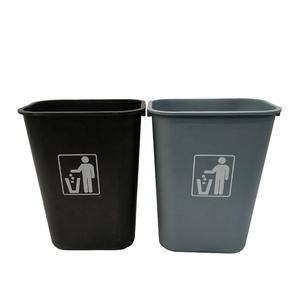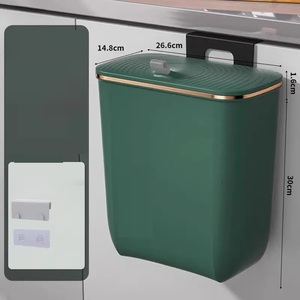(249395 products available)













































































































































































































wasting is an essential component in the packaging and printing industry, particularly within the realm of packaging raw materials. It is primarily composed of recycled paper products, which are repurposed to create new materials for packaging applications. The use of wasting not only contributes to environmental sustainability by reducing waste but also offers cost-effective solutions for manufacturers. As the demand for eco-friendly packaging solutions grows, the importance of wasting in the supply chain becomes increasingly evident. This versatile material can be used in a variety of applications, ranging from simple packaging solutions to complex industrial uses.
There are several types of wasting available in the market, each serving distinct purposes. The most common types include corrugated cardboard, newsprint, and office paper. Corrugated cardboard is widely used for shipping and packaging due to its strength and durability. Newsprint, although thinner, is often recycled into tissue paper or insulation materials. Office paper, on the other hand, is repurposed into high-quality recycled paper products, suitable for printing and writing. Each type of wasting is processed differently to ensure the final product meets specific requirements, whether it's strength, texture, or flexibility. Understanding the different types allows manufacturers to choose the most suitable wasting for their needs.
The primary function of wasting is to serve as a raw material for the production of new paper products. It provides a sustainable alternative to virgin paper, reducing the demand for deforestation. Features of wasting include its recyclability and biodegradability, making it an environmentally friendly option. Additionally, wasting is often more affordable than new paper, providing a cost-effective solution for businesses. Its versatility allows it to be used in various applications, from packaging and printing to crafting and construction. The ability to customize wasting based on the desired properties makes it a valuable resource in the manufacturing sector.
The production of wasting involves the collection and processing of used paper products. The primary ingredients include cellulose fibers, which are extracted from the paper during the recycling process. Additives such as fillers, dyes, and sizing agents may be incorporated to enhance the quality and appearance of the final product. Fillers like calcium carbonate improve opacity and brightness, while dyes provide color variations. Sizing agents are used to improve the paper's resistance to water and ink absorption. The choice of additives depends on the intended use of the wasting, allowing manufacturers to tailor the product to specific applications.
Using wasting effectively requires an understanding of its properties and limitations. When selecting wasting for packaging purposes, consider the strength and durability required for the application. For instance, corrugated cardboard is ideal for heavy-duty packaging, while thinner papers may be suitable for lightweight items. Proper storage and handling of wasting are crucial to maintain its quality; it should be kept in a dry environment to prevent degradation. Additionally, educating stakeholders on the benefits of wasting can encourage its adoption in various industries, promoting sustainability and reducing environmental impact. Recycling practices should also be emphasized to ensure the continuous supply of wasting in the market.
When selecting wasting for packaging applications, it is essential to consider the specific requirements of your project. The type of paper, its thickness, and its source are all crucial factors that can impact the final product's performance. For instance, corrugated cardboard is preferred for its durability in shipping, while thinner office paper might be more suitable for crafting or lightweight packaging. Additionally, understanding the origin of wasting can provide insights into its quality and sustainability. Recycled sources often offer eco-friendly benefits, but verifying their certifications can ensure compliance with environmental standards.
Another consideration is the processing method used to prepare wasting for reuse. Different processes can affect the paper's texture, strength, and appearance. Mechanical pulping, for example, retains more of the paper's original properties, while chemical pulping might alter its texture to better suit specific applications. Choosing the right processing method can optimize the functionality of wasting based on the intended use, whether for packaging, printing, or other industrial applications.
Cost-effectiveness is also a major factor when choosing wasting. While recycled paper is generally more affordable, the price can vary depending on the processing and quality. It is important to balance cost with performance to ensure that the chosen material meets the demands of its application without compromising on quality. Conducting a thorough analysis of the available options can help make informed decisions that align with budgetary constraints and project requirements.
Utilizing wasting contributes significantly to environmental sustainability. It reduces the need for virgin paper, thereby decreasing deforestation and promoting the conservation of natural resources. Additionally, recycling wasting minimizes landfill waste and lowers greenhouse gas emissions associated with paper production. Opting for recycled paper can be a vital step towards achieving eco-friendly packaging solutions.
wasting can be tailored to meet specific needs through various processing techniques and additives. For example, adding fillers can enhance the paper's brightness, while dyes can provide color variations. Adjusting the paper's thickness and texture can also cater to specific requirements, whether for printing, packaging, or crafting. Such customization allows for versatility in using wasting across diverse industries.
Recycling wasting involves several challenges, such as contamination from inks or adhesives, which can complicate the recycling process. Additionally, sorting different types of paper accurately is crucial to maintain quality during recycling. Overcoming these obstacles requires implementing efficient recycling practices and technologies to ensure the purity and usability of the recycled paper.
Yes, wasting can be processed to achieve high-strength properties suitable for demanding applications. By selecting the appropriate type and processing method, recycled paper can be reinforced to withstand heavy-duty uses, such as industrial packaging or construction materials. Understanding the specific requirements of an application can guide the choice of wasting to ensure optimal performance.
Choosing the source of wasting involves evaluating its origin, quality, and sustainability credentials. Opting for certified recycled paper ensures compliance with environmental standards and guarantees the material's reliability. Additionally, considering the proximity of the source can affect transportation costs and impact the overall sustainability of the supply chain. Thoroughly assessing these factors can aid in selecting the most suitable wasting for your needs.